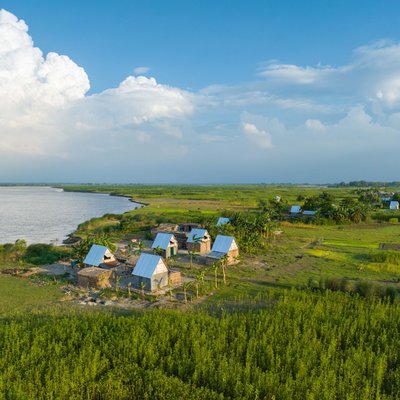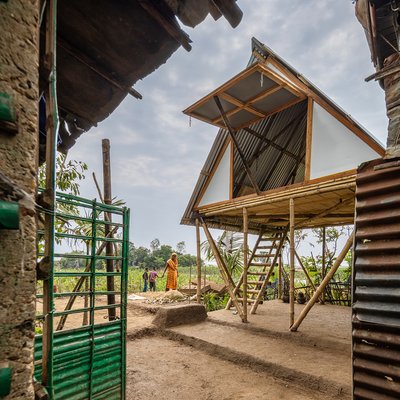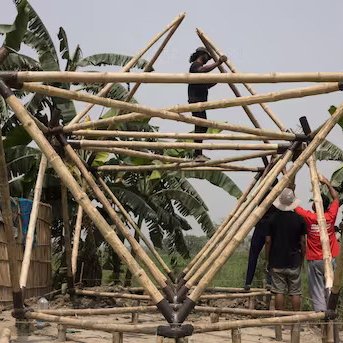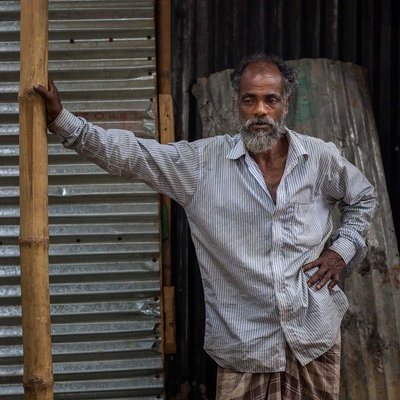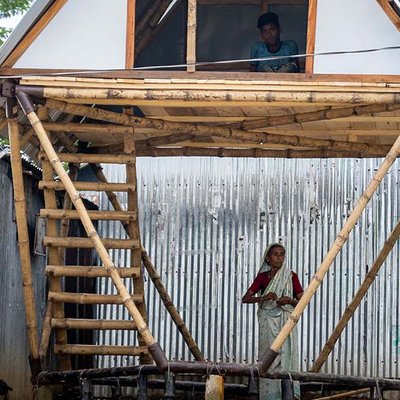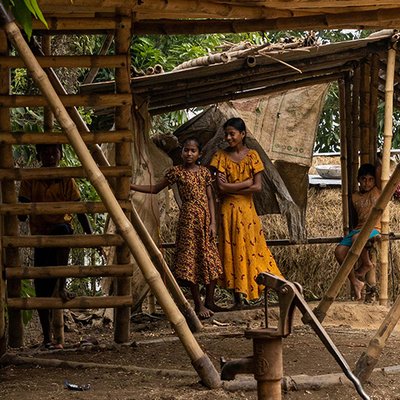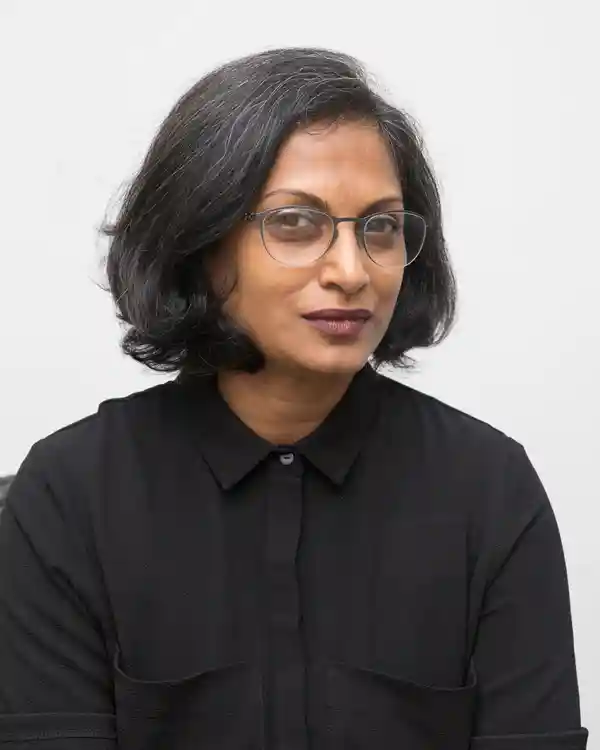
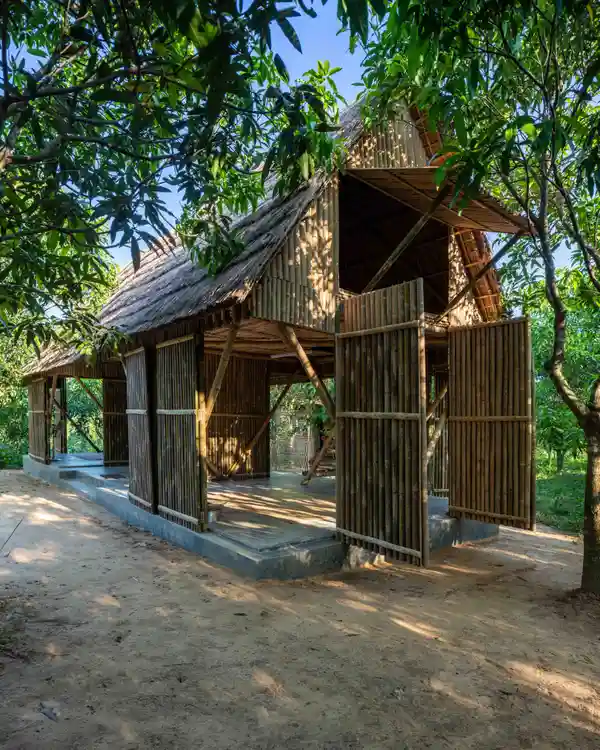

A £300 monsoon-busting home: the Bangladeshi architect fighting extreme weather
From a mosque that breathes to innovative bamboo houses, Marina Tabassum has won the prestigious Soane medal for her humanitarian buildings
For the people of coastal Bangladesh, the monsoon can bring untold torment – and, occasionally, unexpected joy. Every year from June to October, in the Ganges delta region where the country’s three major rivers converge, the waterways swell and riverbanks burst, causing catastrophic flooding. The torrential rainfall is joined by heavy glacial runoff from the Himalayas, exacerbated in recent years by global heating. Homes and livelihoods are lost overnight. But the meltwater also brings cascades of sediment that, a few months later, leave unpredictable gifts – new strips of land, known as “chars”, rising from the riverbed.
“You can’t really call it land,” says Marina Tabassum, who has been awarded the Soane medal, the first architect from the global south to win the prestigious gong. “It is wetness. It belongs to the river. But for the landless, the chars offer some years of relief. They provide a place to fish, cultivate and settle with their families.”
Tabassum turned her attentions to the delta region last year when the pandemic struck and work in her Dhaka office, MTA, slowed down. It gave her time to pause and reflect, and reassess where the skills of an architect can make the most difference. The national lockdown had caused many to lose their jobs, increasing homelessness in the region, with countless delta-dwellers forced to live under makeshift tarpaulin shelters.
“As architects we have a responsibility to these people,” she says. “The construction industry contributes half of all global emissions, but the people being affected by sea-level rise in the coastal areas have zero carbon footprint.”
Coming hot on the heels of the compromised deal agreed at last week’s Cop26 climate summit, her lecture, to be given at Sir John Soane’s Museum on Tuesday evening and streamed online, couldn’t be more timely. Hers is a model of light-footed practice, in tune with what she calls “the wisdom of the land”. It is an approach that prioritises local skills and materials over technocratic solutions, working in harmony with natural cycles and using indigenous knowledge to intervene with minimal means, without “the roaring noise of architecture”.
Last year, Tabassum and her team used the pandemic lull to develop a low-cost modular house kit for the landless char dwellers. They had previously researched the region’s popular flat-pack homes, which are designed to be dismantled and moved when needed, but the cost of £1,500, along with their requirement for carpenters, puts them out of reach of many. MTA designed a simple space-frame system using lengths of readily available bamboo, connected with steel joints, that could house a family of four for £300, and be built by residents themselves. The Khudi Bari (Tiny House) comprises a pitched-roof upper level sleeping platform above a ground floor of compacted earth, with the structure clad in panels of woven grass, or whatever local materials are to hand. Four families have been rehoused so far in Char Hijla, southern-central Bangladesh, to test how the design works, with 100 more homes on the way.
Born in Dhaka in 1969, the third generation of a Bengali immigrant family, Tabassum grew up in a war-ravaged, fledgling nation, witnessing famine, death and destruction as a child. Her father was the only doctor in their neighbourhood, and he would spend each morning attending to a long queue of patients from the neighbouring slum before setting off to work – instilling a sense of social duty that she brings to her own practice.
She graduated from architecture school in 1995 by which time, she says, “the affliction of consumer architecture had already infested Dhaka”. High-rise commercial blocks were springing up, and young architects were expected to join the fray, but she chose to resist. The same year, she co-founded her first practice, Urbana, with Kashef Chowdhury, both driven by a strong belief in craft and a desire to design buildings in tune with the history, climate and culture of the delta. Their decade-long partnership, in work and life, spawned several noteworthy projects, from the Bangladesh Independence Monument and Liberation Museum, to housing that responds to the tropical environment with large openings, terraces and verandahs.
Founding Marina Tabassum Architects in 2005, she embarked on a project (as the architect, builder, fundraiser and client) that would shoot her to international prominence 11 years later, when it won an Aga Khan award. Standing on a frenetic corner of northern Dhaka, the Bait ur Rouf mosque is an oasis of calm, simply modelled from bricks and daylight. Its square prayer hall is surrounded by a cylindrical brick drum, in turn enclosed in a perforated brick cube, the gaps between the geometries allowing shafts of light to wash over the walls from above. It has a timeless air, with echoes of Louis Kahn, whose Dhaka parliament building was a strong influence on the young Tabassum, as well as the brick mosques of 13th-century Bengal. Like her subsequent work, it is entirely naturally ventilated. “I feel breathless,” she says, “if my building can’t breathe without the help of artificial means.”
The spotlight of the Aga Khan award led to her being invited to teach a studio at Harvard, for which she brought the students over to Bangladesh to work on low-cost rural housing projects. She was then invited to exhibit at the Venice Biennale in 2018, and subsequent Sharjah Triennial, joining the international lecture and exhibition circuit. But the pandemic gave her time to refocus, and last year she established a new non-profit branch of her practice, the Foundation for Architecture Community Equity (Face), dedicated to projects for the country’s landless, ultra low-income groups and climate refugees.
They are currently working in the Cox’s Bazar region of Bangladesh, home to the world’s largest group of refugee camps, where around 1.2 million Rohingya Muslims have fled from ethnic persecution in neighbouring Myanmar. Tabassum and her team have been designing food distribution outlets and women’s centres – for both the camp and its host community – aiming to create a more dignified experience than the usual tents for receiving handouts.
“The main challenge is that government doesn’t want anything too beautiful,” she says, “because they fear the refugees will feel at home and not go back.” Digging foundations, for example, is forbidden, because it could encourage the erection of more permanent buildings. She is using the same modular bamboo space-frame system as for the Khudi Bari, allowing the structures to be temporary, but providing the opportunity for co-design and creation with the refugees themselves.
Tabassum continues to design the more regular commercial projects at MTA – an apartment building, a private family museum and a 250-bed hospital on the outskirts of Dhaka are currently under construction – in order to subsidise the humanitarian work of Face, where her heart clearly lies. “Architecture has always been a service-rendering profession,” she says, “responding to a client, budget and site. In the current context, where there is such an enormous disparity between rich and poor, it is not sustainable if we make ourselves available only to the 1%. We need to go beyond that.”
And her thoughts on winning the Soane medal?
“At first I thought it was a prank,” she laughs. “Compared to the previous winners, Rafael Moneo, Denise Scott Brown and Kenneth Frampton, I am very much a work in progress. The search is still on.”
Extract from: https://amp.theguardian.com/artanddesign/2021/nov/16/marina-tabassum-architecture-soane-medal-bangladesh-housing
More News Like This
